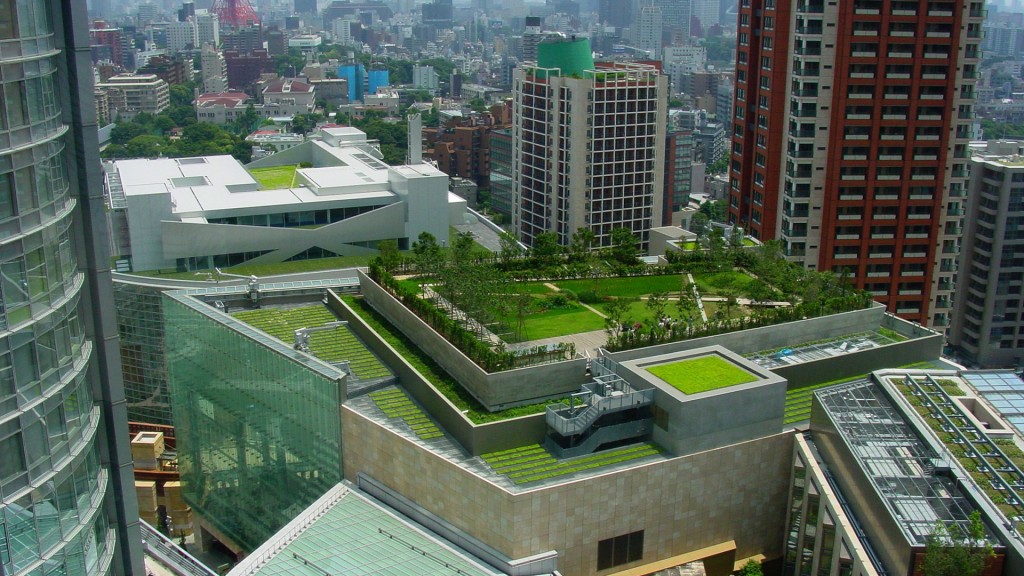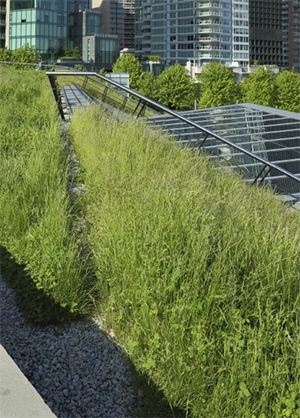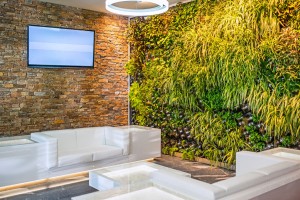

Urban Greening
The development of urban landscape development can have dramatic effects on the local environment. A built environment with multi discipline vegetation use is not only a more pleasant place to live and work,
- it drives productivity, health and wellbeing,
- increases property prices, decreases crime and stimulates motivation and performance
Compare a tree lined road with a non greened highway, the atmosphere is completely different, there is less noise, visible pollution, vehicles tend to move slower, there is more moisture and oxygen in the atmosphere that all lead to a more pleasant and productive environment.
Urban Greening mechanisms include:
- The use of ground based landscape
- Urban green areas and parkland
- Living roofs
- Vertical greening
- Street trees
Urban Highways
Small areas of vegetation allow species transit through the urban landscape to larger areas of parkland, living roofs and vegetation.
Without these small areas and feeding stations, many species struggle to establish sustainably within the urban landscape as distances between applicable green areas prevent the expansion of delicate micro populations that rely on seasonal pollen and nectar sources.
Biophilia
The use of vegetation to offset environmental and internal pollutants and chemicals to improve the urban atmosphere and the home and workplace.
The use of certain plant species can prove hugely beneficial to improving local environments and places of work, key benefits include:
- Improved air quality by absorbing and trapping air bourne pollutants, carbon and environmental elements responsible for air pollution, creation of Ozone which is the primary ingredient of smog and urban and workplace chemicals produced by every day products
- Reduction of HAPs (hazardous airborne pollutants), PM10s (small partials and dust) and VOCs (volatile organic compounds)
- Re oxygenation of the local environment and the internal home and workplace
- Increased productivity, motivation, health and wellbeing
- Decrease in elements responsible for breathing disorders
- Increased management of water and a mechanism to alleviate flood risk and offset poor drainage systems
- Decrease in acoustic performance and the noise of heavy rainfall
- Insulation benefits, reduction in building heating and cooling costs
- Decrease in urban temperature peaks often 7-10 degrees warmer than surrounding rural areas
- Urban cooling to offset the lack of wind circulation reduced by the built environment
Biophilic Design
The incorporation of vegetation when considering urban design is often considered but not always realised. Vegetation and landscape is often aesthetic but does not always optimise the environmental and ecological functions of the location.
Non flowering evergreens offer habitat and carbon reduction but not offer pollen or nectar sources to improve and maintain a wide cross section of wildlife bio-diversity.
Design processes should include:
- A mixed range of vegetation type
- A range of pollen and nectar sources
- Long season flowering potential
- Allowance for invertebrate develop, generally open areas of non vegetation, a key element of bio-diverse living roofs.
- Species that thrive in polluted environments and require minimal external intervention and maintenance
- Species that are sustainable and known to absorb large quantities of pollutants and carbon
- That offer carbon sequestration solutions
- That can use substrates that offer water management solutions.





